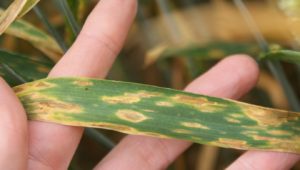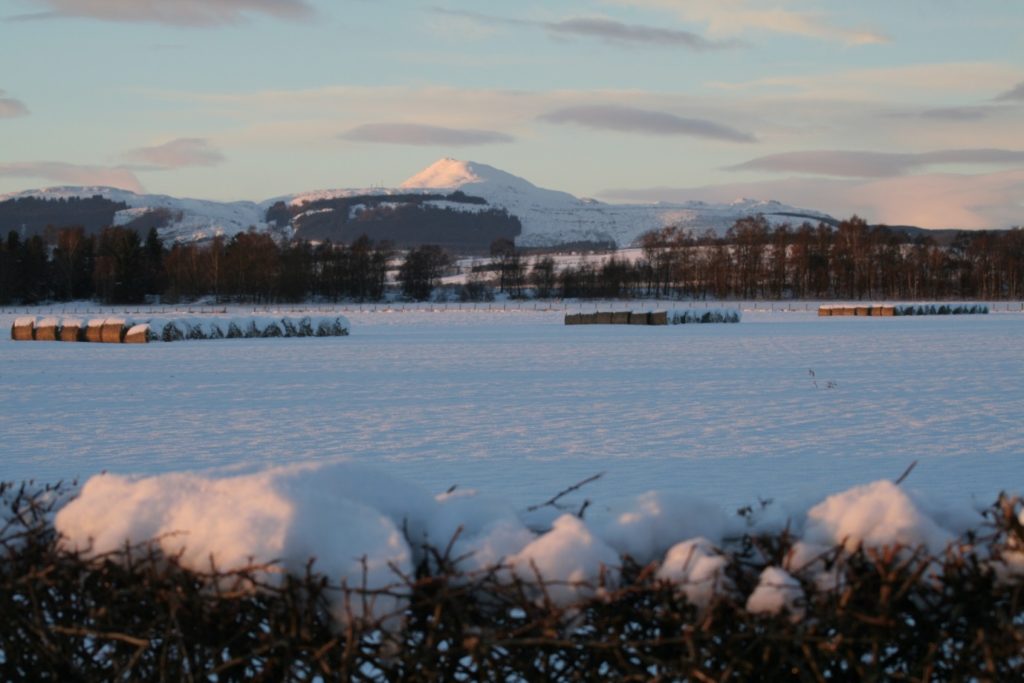Planning ahead for disease management in 2018 – what’s brewing in our winter crops?
10 February 2018Snow and cold temperatures will help to reduce the overwintering pest and disease burden in Scottish crops and this reduced risk should be factored in to early spring spray plans. Winter drilled crops are always at higher risk of diseases and pests compared to spring drilled equivalents. A general pattern of warmer autumns and milder winters has tended to favour the persistence of pests and diseases and the speedy establishment of problems in the autumn. A trend towards early drilling also favours the ingress of aphids and the early establishment of diseases. In contrast to the south of the UK where drilling dates for winter crops have moved later to counter blackgrass, Scotland has seen no such shift and clearly getting a portion of the crop established in good early conditions will always be important in our more challenging climate. But in contrast to a year ago where there were already reports of BYDV, mildew and other diseases in cereal crops, reports this year from winter crops are of lower levels of disease.
Oilseed rape is an exception to this lower pressure season, with light leaf spot establishing early at SRUC trial sites. Oilseed rape is early drilled and the wet conditions in many areas in late August and September probably favoured infection as we know that at this time there are large movements of light leaf spot spores coming off harvested crops and drifting in to new crops . Fungicides to manage light leaf spot are more effective when applied protectantly so protecting new growth in the spring when the crop starts to extend away is important and the dose required can be judged by the previous history of the disease on the farm, by the resistance rating of the variety and by walking crops and looking for disease. Any suspect leaves should be incubated in a plastic bag for a day or two to see if the tell tale ‘salt grain’ like spores of light leaf spot develop.
In winter barley, mildew, net blotch and rhynchosporium are the diseases of most concern as we move in to the early part of the year. Levels were low in the autumn and any lingering disease will not be enjoying the current cold run of weather. Similarly in winter wheat, mildew, septoria and yellow rust levels were very moderate in the autumn compared to a year ago. There are always exceptions to such general statements so walking individual crops is clearly very important. But judging actual disease risk can help to target and tailor fungicide inputs so that lower inputs can be made to crops that were late drilled or where the variety drilled had a more robust resistance score. In SRUC trials looking at septoria risk last year, we recorded twice as much septoria after flag leaf emergence in plots drilled at the end of September compared to plots drilled at the end of October and three times as much septoria in plots of Santiago (rated 4 for septoria) compared to plots of Revelation (rated 6). That demonstrates the very different disease risks even on a single site and farm and gives scope to moderate and tailor inputs accordingly. Decisions on early fungicide sprays at stem extension (T1) can be tailored to the diseases present in the crop and T0 sprays applied before this can be targeted to only high risk situations. While it is useful to have a general plan of fungicide programmes ready for the farm it would be inefficient to apply the same level of inputs to say a late drilled, resistant variety on the hill as are applied to the dense, early drilled, weak variety in the field where you always see disease first. Pesticide survey records show that we don’t really moderate inputs based on regional and seasonal risk so there should be scope to manage disease in more tailored, targeted and efficient ways.
Fiona Burnett (SRUC) for the Farm Advisory Service
Sign up to the FAS newsletter
Receive updates on news, events and publications from Scotland’s Farm Advisory Service



